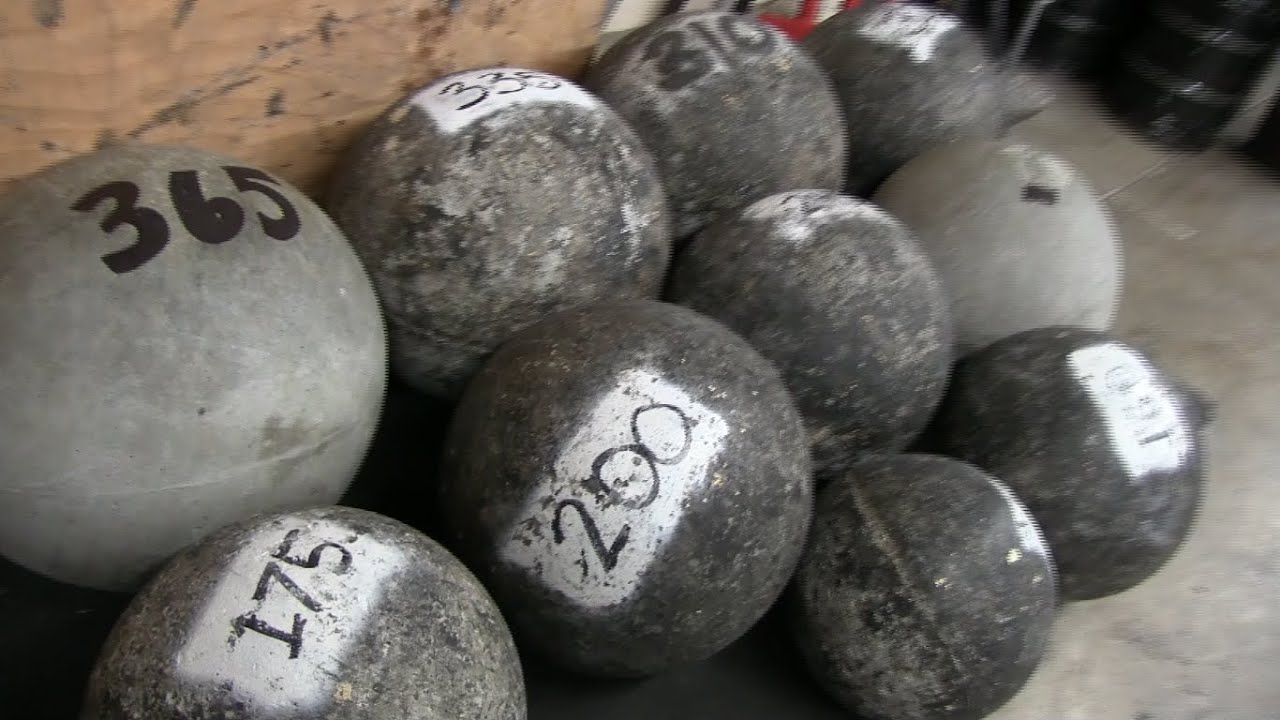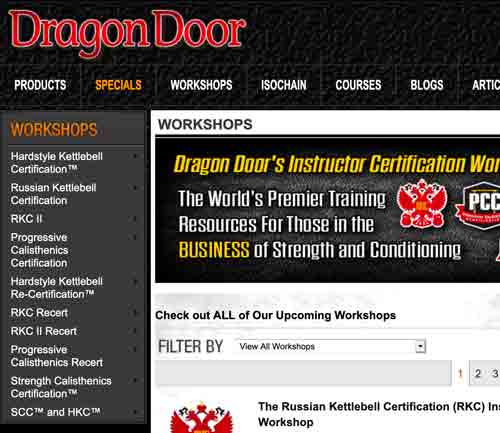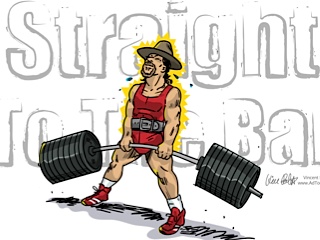
If you read most strength related material on the web today, you are going to come across a lot of talk about training weaknesses.
This is great information, however, if you aren’t sure what the weakness is, how are you going to address it, train it, and fix it? The best way is to have a competent lifter watch your squat form with heavy weights, then break down what you are doing wrong. That isn’t always the best option. I mean, lets face it, it is downright impossible to find a “competent lifter” in the gym environment! So, I will go over some typical squat faults, what causes them, and what you can do about them to get your squat on the rise again.
Bending at the knees first
This is a common problem among many beginning squatters as the lifter is usually afraid of falling backwards with the weight. Instead of sitting back first, the lifter will bend at the knees to go down. This causes the knees to go forward well over the toes and often times causes the lifter to go up onto their toes in the hole. This is not only dangerous, but you are limiting how much you can squat. The pressure on the patellar tendons in this position is tremendous and leads to big time problems down the road.
Yes, some lifters, especially Olympic lifters, can adapt to these kinds of stresses from having their knees that far forward.
However, the goal here is to improve the squat and move more weight, and that will be accomplished by sitting back into the squat.
How to fix it
The lifter must learn to sit back and not down. This can take a long time to get them to do, and even longer to get them to do it under maximum loads. I start all newbie squatters on a box.
I use a very high box and a very light load, usually the empty bar with some light JumpStretch© bands attached for tension. The basic commands I give are for the lifter to sit back like he is searching for a chair that is behind him. Once the lifter can get down to the high box by sitting back, I lower it an inch and start all over. Eventually the lifter will be able to sit back to a parallel box and the movement will become second nature.
Another possible reason for the lifter’s inability to sit back is hamstring strength. If the lifter has weak hamstrings, he won’t be able to sit back into a squat without falling. It gets much worse as the weight increases. To address this, get the lifter on the glute-ham machine pronto!
This is the best way to bring up lagging hamstrings and prepare the lifter for handling more weight in the squat correctly. I have also found Romanian Deadlifts and reverse hypers to be effective for improving the sit back portion of the squat.
Knees come inward on ascent
This is probably the second most common error made by a squatter. The lifter usually descends well, but once they hit depth and attempt to come back up, the knees shoot inward leaving the lifter in an awkward and dangerous position. The reason this happens is usually linked to weak hips. The hips are weak, and therefore the body, in attempt to lift the weight, will draw the knees inward. This places the stress on the stronger quadriceps muscles.
How to fix it
Direct hip work will help immensely, but the lifter also needs to learn how to squat. The quickest way I have corrected this with lifters is to take a min JumpStretch© band, double loop it, and put it around the lifters legs at about knee height while they squat lighter weights. The lifter’s goal is to keep the band tight and not let it fall down their legs. This will cause them to focus on proper knee position and really driving the knees out, not only during the ascent, but also during the descent. If you do this often enough, it will become second nature for the lifter to drive his knees out during the squat. I have found this to be most useful during wide stance box squat training. The lifter will be handling a lighter load, 50-60%, and thus can focus on the proper mechanics and keeping the band around their knees tight. Once it becomes second nature, there will be no need for the band.
Direct hip work via handle squats, pull-throughs, kettlebell swings, and belt squats will also help bring the hips up to match the strength of the quadriceps. When doing any type of direct hip work, make sure to really drive the knees out and make a conscious attempt to ‘spread the floor‘ with your feet. Drive your feet hard into and out against the platform to assure proper hip activation.
Falling forward
Of all the things that can go wrong, falling forward is the scariest. It can injure a lifters back, scrape the top of their scalps off, and, worse case scenario, face plant them. Falling forward is one of the hardest squatting problems to diagnose because there are many factors that lead to this.
Bar placement, lower back strength, squat form, flexibility, etc. can all lead to falling forward on the squat. As a lifter, you must pinpoint what is causing it, and then fix it. Lifters who fall forward typically have form that degrades more and more with each pound that is added to the bar.
How to fix it
Let’s first look at bar placement. Many lifters carry the bar high on their backs. For a powerlifting style squat, that is a big no-no. Olympic lifters use a close stance squat. In order to maintain proper balance when you are squatting with your feet 12″ apart, you must rack the bar high. This counters the lean and thus keeps you upright. As your feet go out, and they SHOULD if you are looking to move the most amount of weight you can, you must get the bar lower on your back. Think of your hips as the pivot point. The closer you can physically get the bar to your hips, the better off you will be. If you have the bar high on your neck, the distance is increased. This will cause the lifter to lean excessively forward out of the hole. Once leaning, the bar is longer over the hips and the lifter is tossed forward into a good morning. Not good for your total or your spine! Set the bar on the second notch, just below the traps. You can see the bar mark on my back to see how low I have it.
I had one particular lifer who would constantly go forward onto his toes. He had the bar racked high on his traps. We moved down an inch or so and suddenly he not only improved his form, he hit a 50 pound pr!
Another thing to look at is the lifter’s form in the hole. Many lifters will round their lower backs as they reach depth. Their butts will tuck in and the lower back will round under a little bit.
This will happen, and it isn’t such a bad thing if you can come out of it. To avoid this, make sure you move the bar first out of the hole. This means, jam your head back into the bar and get that arch back as you start the ascent. If you don’t, then you will go forward into a good morning position. I have found the single best thing to fix this is the safety squat bar from www.elitefts.com. This bar torques you forward, the more weight you add to it, the more the torque. This forces the lifter to come out of the hole the right way, but jamming back into the bar. If you don’t do that, and you allow yourself to get into a goodmorning position with the SSB, you are going to get decapitated. My form improves by leaps and bounds just by adding the SSB squat into my routine from time to time. If you are this kind of squatter, use the SSB and use it OFTEN. You are not going to believe the results!
A third possible reason for falling forward is hip and ab strength. If the lifter has weak hips, he will get to depth, and on the ascent he will allow his ass to shoot up and dump the weight forward. This is because the hips and abs are not strong enough to stay under the load, and thus the weight is dumped to the lower back. Many lifters believe this is a lower back weakness, when in fact; it is a hip and ab weakness. Train the hips via the above mentioned exercises to get the hips up to par with the lower back. For abs, do standing pull-down abs. The best tool I have found for these is the Spud Inc. Long Ab Strap. These are going to wreck your abs in a good way and increase torso strength under heavy loads. Also, work the side obliques via side bends, planks off the glute-ham machine, and side bends with a barbell off-set on your back.
Learn to use your abs by taking your air in and pressing your abdominals hard into your belt. This will keep you upright and allow you to keep your tight arch.
A fourth possible reason for falling forward is lower back weakness. If you just can’t physically get your arch back once you hit depth, then you may need to focus on some direct lower back work. The safety bar and cambered bars work great for this! Of course, the good morning, both seated and standing, and the reverse hyper are awesome at developing the spinal erectors. Superman’s have been a staple in my exercise routine now for weeks and I can tell they have added pounds to my lifters.
If you do all of the above and you are still having trouble, then try the overhead squat for awhile.
Your form has to be perfect on these or you are going to crash and burn. They teach you to keep a solid arch, and to push back on the way up. I have used them with many lifters successfully.
There you have it, some tips on how to fix what ails you in the squat. Putting the above ideas into action will get your squat on track and get you gaining again. Make sure to set-up your daily regimen to avoid over training the back and hips. These areas are easy to over train and easy to injure. Focus on one thing at a time, once it is fixed, move on. I am more then willing to look at some of your video footage to try and help you discover what you are doing wrong and how to fix. Email me at rickwalker.cscs AT gmail DOT com.
Until next time FREAKS, go lift something heavy!
-Rick Walker











0 Comments
Trackbacks/Pingbacks